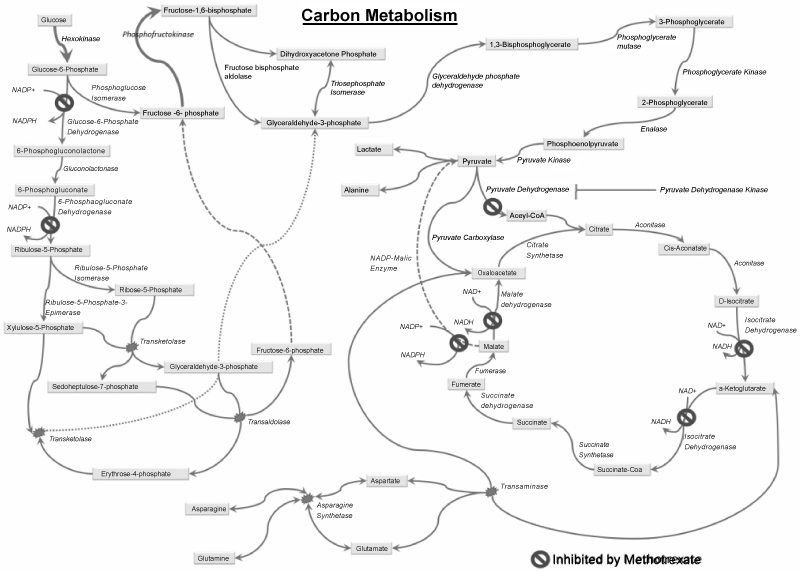| Figure 3: The effects of methotrexate on pathways of adenosine metabolism. By inhibiting the regeneration of THF, MTX inhibits the enzyme AICAR transformylase. A subsequent build-up of this enzyme’s substrates lead to an accumulation of AMP and adenosine in the cell via inhibition of AMPDA and ADA. This intracellular accumulation leads to an increase in extracellular concentrations of AMP and adenosine via efflux pumps and enzymatic cleavage of phosphate bonds. This extracellular accumulation of AMP and adenosine is currently thought to be the effective mechanism of action for MTX in the treatment of rheumatoid arthritis. |

